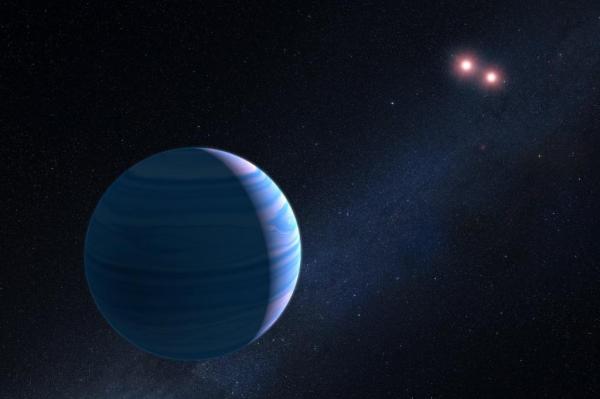-
Tips for becoming a good boxer - November 6, 2020
-
7 expert tips for making your hens night a memorable one - November 6, 2020
-
5 reasons to host your Christmas party on a cruise boat - November 6, 2020
-
What to do when you’re charged with a crime - November 6, 2020
-
Should you get one or multiple dogs? Here’s all you need to know - November 3, 2020
-
A Guide: How to Build Your Very Own Magic Mirror - February 14, 2019
-
Our Top Inspirational Baseball Stars - November 24, 2018
-
Five Tech Tools That Will Help You Turn Your Blog into a Business - November 24, 2018
-
How to Indulge on Vacation without Expanding Your Waist - November 9, 2018
-
5 Strategies for Businesses to Appeal to Today’s Increasingly Mobile-Crazed Customers - November 9, 2018
NASA’s Hubble finds planet orbiting two stars
Astronomers who studied this distorted light were able to find clues about stars in the foreground and potential planets orbiting the star system. A microlensing event observed in 2007 first alerted scientists to the planet’s presence.
Advertisement
Astronomers have used a technique known as gravitational microlensing to unravel a distant star system 8,000 light years away. The phenomenon, which was first predicted by physicist Albert Einstein, occurs when gravity from a foreground star bends the light of a background star that aligns with it.
David Bennett of NASA’s Goddard Space Flight Center said that it could be a Saturn-mass planet orbiting a close binary star pair. While Kepler is more likely to detect planets with small orbits – and indeed all the circumbinary planets it discovered are very close to the lower limit of a stable orbit – microlensing allows planets to be found at distances far from their host stars. “The model with two stars and one planet is the only one consistent with the Hubble data”, Bennett said.
They were not able to examine closely at the time, but to get a better view, the team made a decision to use the Hubble Space Telescope to examine deep space, which then revealed the other star. “The exoplanet was observed as a microlensing event in 2007”. About 300 million miles away is the gas giant planet that orbits them, and it takes about seven Earth years to go around once.
The detected event is called OGLE-2007-BLG-349 and was identified during the Optical Gravitational Lensing Experiment (OGLE) based on the observation on “small distortions” of spacetime.
The star system consists of two red dwarfs orbiting one another only 7 million miles apart (as a comparison, this is only 14 times the Earth-moon distance).
With Hubble’s sharp eyesight, the research team was able to separate the background source star and the lensing star from their neighbors in the very crowded star field. The Hubble observations revealed that the starlight from the foreground lens system was too faint to be a single star, but it had the brightness expected for two closely orbiting red dwarf stars, which are fainter and less massive than our sun. “We were helped in the analysis by the nearly ideal alignment of the foreground binary stars with the background star, which greatly magnified the light and allowed us to see the signal of the two stars”, Bennett explained.
Advertisement
“This discovery, suggests we need to rethink our observing strategy when it comes to stellar binary lensing events”, said Yiannis Tsapras, researcher with the Astronomical Calculation Institute at Heidelberg University. Whereas NASA’s Kepler Space Telescope seeks out the transits of exoplanets across the face of their stars, microlensing can detect entire star systems with exoplanets in far-flung orbits, but this can only be done with confirmation from Hubble. “This is an exciting new discovery for microlensing”. With this latest revelation, it seems that the Hubble telescope will be even more useful in the search for exoplanets in the future.




























